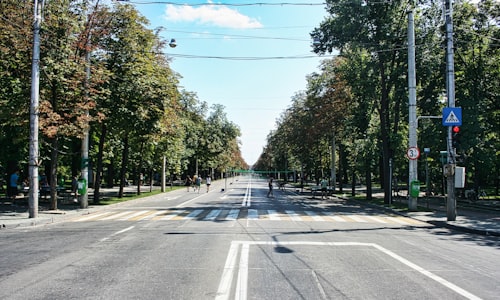2011 Tsunami facts
While investigating facts about 2011 Tsunami, I found out little known, but curios details like:
Most cities hit during the 2011 tsunami in Japan [which caused the Fukushima disaster] were built well below hundreds of ancient stone markers warning not to build below that level
About popsicles that don’t melt. After the 2011 tsunami, scientists helping strawberry farmers in Japan salvage damaged crops accidentally discovered that liquid polyphenol extracted from the berries caused cream to solidify. This lead to Kanazawa Ice pops, which can stay frozen up to an hour.
In my opinion, it is useful to put together a list of the most interesting details from trusted sources that I've come across. Here are 50 of the best facts about 2011 Tsunami I managed to collect.
-
A Japanese Village was spared being destroyed during the 2011 tsunami by its huge seawall - a wall that its previous mayor had been harshly criticized for building
-
The Onagawa Nuclear Power Plant that was closest to the epicenter of the 2011 tsunami in Japan but was undamaged because it far exceeded the required safety measures due to the stubbornness of one man. Fukushima famously experienced fatal meltdowns because safety measures were inadequate.
-
The Onagawa Nuclear Power Plant. It was much closer to the epicenter of the 2011 Earthquake than the Fukushima Power Plant, yet it sustained only minor damage and even housed tsunami evacuees. It's safety is credited to engineer Hirai Yanosuke who insisted it have a 14m (46FT) tall sea wall
-
A 57yo Japanese man has been learning to SCUBA dive specifically so he can look for his wife's remains after she was presumably swept away during the 2011 tsunami. He says her last email to him was "... I want to go home", and he is determined to make that happen.
-
On a hill overlooking the ocean in Otsuchi Town in northeastern Japan is a phone booth known as the "Telephone of the Wind". It is connected to nowhere, but people come to "call" family members lost during the tsunami of the 2011 Great East Japan Earthquake.
-
Japan was changed forever by the devastating triple tragedy that unfolded on March 11, 2011, bringing an earthquake, tsunami and nuclear crisis." "The total cost of the catastrophe has been put at $286 billion by the World Bank, making it the most expensive disaster of all time."
-
In the months after the 2011 quake in northeastern Japan, taxi drivers reported picking up "ghost passengers" in the coastal town of Ishinomaki where nearly 6,000 people died in the tsunami.
-
During the 2011 earthquake in Japan, all 184 students of Kamaishi City's Primary School survived the earthquake and the ensuing tsunami without any adult help and supervision
-
A girl sacrificed her life in the 2011 Tohono tsunami to warn people of the oncoming tsunami and saved 10,000 peoples' lives
-
The Japanese high-speed rail system has a network of seismometers that will stop their bullet trains in the event of an earthquake. This system was activated just 12 seconds before the 2011 earthquake and tsunami and as a result, only one bullet train on its test run derailed that day.

What is true about 2011 tsunami?
You can easily fact check it by examining the linked well-known sources.
A Harley washed up onshore in Haida Gwaii, British Columbia after being swept away in the 2011 Japanese Tsunami. It was sent back to Japan to be restored by Harley-Davidson and returned to its owner. He instead opted it be placed in a museum as a memorial to the victims of the disaster.
The makers of Hello Kitty, Sanrio, was in a big legal battle with a European toy company before the 2011 Japanese Earthquake and Tsunami. Immediately after the disaster, both companies agreed to settle out of court and use the legal fees to help the victims. - source
Takeshi Miura and Miki Endo. During the 2011 Japanese Tsunami, they were two risk management workers tasked with warning and directing the public to safety. When the wave was about to hit, both stuck to their posts and kept broadcasting, using their last words to direct townsfolk to safety. - source
The 2011 Japanese tsunami brought living Japanese wildlife to Canada and the US
The Ryou-Un Maru, a fishing boat that was washed away from its mooring by the 2011 Japan earthquake and tsunami and was feared lost. It was spotted more than a year later off the coast of British Columbia, Canada, then near the Alaskan coast. - source
The Yakuza, Japanese mafia, aided the Japanese after the 2011 earthquake and tsunami, by providing help to many Japanese citizens in the form of aid
Hideaki Akaiwa, a man who saved his wife and mother in the aftermath of the 2011 Japanese tsunami, by donning some scuba gear and swimming through waters filled with floating wreckage, to rescue them from their homes.
Oman, a Middle Eastern country with a population of 3 million, donated the fourth largest amount of relief to Japan after the 2011 tsunami (¥1.07 billion), more than China and any European country.
Only two nuclear disasters have been labeled as a level 7 incident. One was the Chernobyl incident and the other was the Fukushima I Nuclear Power Plant accident on March 11th, 2011 which occurred because of a tsunami.
In April 2015, authorities off the coast of Oregon discovered debris that is thought to be from a boat destroyed during the 2011 Japan tsunami. Cargo contained yellowtail jack fish, a species that lives off the coast of Japan, still alive.
A Japanese man's Harley was swept by the tsunami in 2011 only to wash ashore in Canada a year later.